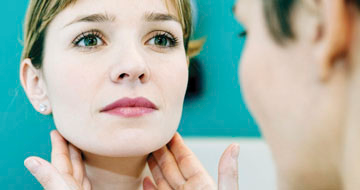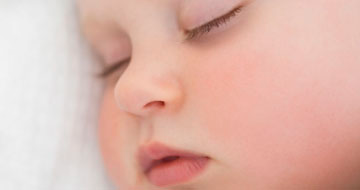
Babies Children and COVID-19
Dr Ed Abrahamson, Consultant Paediatrician, updates us on how Covid-19 affects babies and children. The good news is that the risk is very low.
As children return to nursery and school, the number of viruses will increase, and they will start becoming ill. This is not only normal, but necessary, particularly for very young children who have been in isolation for 3 months without exposure to viruses (an abnormal situation, not helpful for their adaptive immunity). Parents will have to become used to the regular fevers, coughs, colds in their children once more now, (only a fraction of whom may develop Covid-19, although Leicester is actually seeing more childhood cases right now).
C-19 levels in London are now extremely low and it is very unlikely you will come into contact with it although as Leicester proves, this virus has a mind of its own and its hard to predict its next move.
It is lurking here and will highly likely upsurge in autumn but as I have said consistently since day 1, based on all available evidence, now after many millions of C-19 cases, children are not at risk of severe disease from C-19 in the vast, vast majority. It is usually a trivial or asymptomatic illness. We have always recognised that rare serious cases and deaths would and indeed have occurred.
The risk of C-19 in children has been shown to very low, only 2.1% of cases across the EU and UK have been in children according to laboratory sampling, a study of millions of cases. This might increase over time. The overall rate of infection in the UK is estimated to have been low, around 5% only of the population were infected. This clearly raises a lot of questions as to community susceptibility in an upsurge.
The government has indicated it will be compulsory for children to return to school in September. There will be very few medical grounds not to return, and these would be directed by your doctor, even many children with immunodeficiencies do go to school normally. And remember there is no such thing as zero risk, before C-19 came, and well after it will leave.
The issue parents face that will be most pertinent will be if a vulnerable adult is at home. This will inevitably pose difficulties. PCR swab tests for anyone now are available, either by post or by drive-through for active disease. You will be asked to do the swab on your own child.
There are no new developments regarding PIMS-TS (or MIS-C), as defined as having persisting fever, laboratory features of inflammation and at least one organ dysfunction. It emerged out of the blue in early May, was prevalent for 2 weeks then rapidly faded away. We do not yet understand this. It was rare. It was probably distinct from Kawasaki, a disease which affects approximately 3000 cases a year in the UK the cause of which remains elusive after 50 years since reported. It can be effectively treated if recognised early.
If your child has a persisting fever (so over 5 days) or appears to you to be very unwell, eg lethargic, or widespread rash, or poor colour or has diarrhoea and vomiting with the fever, then seek urgent medical attention. Also follow the traffic light system. Do not stop any long-term medication your child is on, eg anti-asthma drugs (clenil, flixotide, Seretide). Children with recurrent wheeze or asthma, aside from severe cases (still very low), do not appear at any increased risk at all. Roche and Abbot laboratory blood-draw antibody tests are now available, both compare very favourably with 99% sensitivity. Home tests are not reliable. But we still do not know what it means having an antibody, or why some people who clearly had C-19 never developed them.
Overview and children with C-19
The most important message is that there is no cause for alarm about your child, even if they become infected.
I would urge you not to read certain well known on-line “news” papers. They portray sensational often inaccurate headlines, this is not healthy for anyone to read, particularly when anxiety levels for us all are high. We must protect ourselves here, it does not help, and we should try hard to avoid. It is important to be aware of updates and advice from health agencies. When I look back now so, so many newspaper headlines were inaccurate and unhelpful during the peak periods.
The vast majority of all adult patients recover very well, but the headlines focus on the minority who need hospital care, a minority of whom need to be ventilated. Sadly, this latter group of patients does have a high mortality, up to 53%. The virus can cause serious multi-system complications in adults including seizures, brain inflammation, strokes, heart attacks and thrombosis.
Children are very low risk indeed, particularly under 10. As shown below in the section on mortality data, at that time there had only 1 death of a child under 10, with other complex problems, in the UK, out of 23,000 C-19 cases. The risk of death in the under 15-year olds remains tiny. Indeed, as of today, there have been just 4 deaths. There are approximately 11 million children under 14 years of age in the UK.
Despite PIMS-TS, see above, which went as quickly as it came, this does not change the main facts and the narrative about the benign course of the disease in children to date. All viruses can cause rare complications as we see every year, and PIMS-TS could be a C-19 related phenomenon for small numbers of children. You would probably never leave the house if we shared everything that we see all the time, eg deaths from Kawasakido occur tragically every year. We need to be careful not to automatically conflate a normal albeit tragic occurrence with issues to do with C-19 specifically.
If you child has a persisting fever (so over 5 days) or appears to you to be very unwell, eg lethargic, or widespread rash, or poor colour or has diarrhoea and vomiting with the fever, then seek urgent medical attention. Many children can be asymptomatic carriers and thus innocent spreaders (as indeed can adults, we still don’t know the true scale of this). Healthcare professionals have now been advised not to look in any child’s mouth or to even get close to their faces, even when no fever or cough, unless absolutely unavoidable.
Even if the cause of your child's fever, cough, sore throat, rash, etc is C-19 there is no need for alarm. Your child will start getting ill when schools properly restart in September and you should treat as with any other virus, follow the government guidance regarding self-isolation as above (unless you have a negative swab), keep at home along with the whole family for 7 days, and treat with paracetamol if they are distressed from fever. Do not treat a fever if child is otherwise well (normal advice for all fever). As outlined above, you can use ibuprofen for high fever, if needed. You must follow the traffic light system for directing you to seek medical care which does cover all the symptoms I include above in the new PIMS-TS advisory.
Also, children with underlying respiratory illness, eg recurrent wheeze or asthma, (unless severe disease) do not appear at greater risk of complications than any other virus although may be more likely to get it, as with influenza. The same applies to those with underlying immunodeficiencies (which usually predisposes to bacterial not viral illness). You must not stop any treatment they are on. There are rumours abounding about inhaled steroids. Do not stop these. If your child is on them, they need them. There is no evidence to support stopping them.
I am asked a lot about any extra precautions that should be taken for these children and the answer is not specifically, save for the fact that they should be as well controlled as possible as is the advice for any child with asthma or wheeze, particularly in the winter season. So, this is not the time to be reducing any treatment if that had been the plan. Ensure you have a salbutamol puffer at home if your child does take this as reliever.
Hydrochloroquine or its derivatives have now been excluded as having any value. A number of drugs for use in the sickest patients show promise, but nothing at all for the less severely ill patient has emerged.
UK disease burden and mortality
As outlined abovewe are now in the post first wave period, but by looking at other countries, the virus is just dormant and can upsurge at any time. The US never got out of first wave and are showing staggering levels of activity, sustained over 3 months, and increasing.
The UK has sadly suffered one of the highest absolute number of deaths in the world other than the US. The ONS already estimate well over 60,000 deaths. The UK also is showing one of the highest numbers of deaths per million population, to date Belgium has the highest (but they are including cases in care homes where C-19 is just suspected not confirmed, which make up half their deaths) followed by the UK. Clearly on the face of it the virus has had a terrible impact in the UK and worse than most countries, but this is crude data. Our infection fatality rate headline figure is 14.0% but this is a gross over-estimate as it does not take into account that the vast majority of community cases are not being included. For some countries, their data seems hard to believe, with very small mortality rates despite poorly developed healthcare systems. Our ONS (Office of National Statistics) is a robust independent and extremely highly regarded data collection and analytical agency, probably the most so in the world.
As I have outlined above, we are very early on and we cannot yet come to any conclusions as to whether at the end of all this, the UK will have fared worse than other countries. We might not know until as long as 2022.
Further, and most importantly, there is an international consensus that the uniform metric which matters most, and which is measured in the same way across all countries (which C-19 deaths are not), is the age-adjusted all-cause mortality, and looking at the excess in each country compared to an average for time of year. This will not become available for 6-12 months but will give us the most accurate comparative data. Excess all-cause mortality will also take into account indirect deaths, eg those not caused directly by C-19, but which occurred either through lack of access to healthcare and treatment delays/deferrals during this time, and reluctance of patients to access hospital care for fear of catching the virus. These will be significant for sure I feel.
As discussed above, death rates are varying widely (ignore UK “rate” of 14.0% as only a fraction of total cases recorded to reach this figure). The purest data still remain from the Diamond Princess, where a high proportion of the ship was tested, 700 developed C-19. The final corrected Infection Fatality Rate (cIFR) has now been estimated at 1.3%, but the demographics were older, mean age 58. Assuming no changes in viral lethality, this would be the maximum overall IFR that would be expected to occur, certainly in well-resourced health care settings. A large-scale study from New York published 1 May, has calculated the IFR for the US overall to be lower, at 0.86%. As with all the data emerging, the IFR is higher for males than females, with a significant age effect, with a rate in New York ranging from 9.17% over 75 years to 0.001% for females 0-17 (i.e. 1:100,000 infected people in this age and sex group). The ONS released this very detailed and informative age breakdown for the first 22,351 deaths in the UK. As is evident, 80% of all deaths have been in those aged 80 or over. Only 1 death had occurred under the age of 10 (and they had co-morbidities) and 2 between 10 and 14. Only 2.2% of deaths were in those under 50 years of age. They have not published further, but expectation is that the trend has remained the same.
| Age | Age | ||
| <1 | 0 deaths (0% of total) | 45-49 | 242 (1%) |
| 1-4 | 2 (0.008%) | 50-54 | 4 (2%) |
| 5-9 | 0 (0%) | 55-59 | 739 (3.3%) |
| 10-14 | 1 (0.004%) | 60-64 | 1,111 (5%) |
| 15-19 | 7 (0.03%) | 65-69 | 1,454 (6.5%) |
| 20-24 | 12 (0.05%) | 70-74 | 2,340 (10%) |
| 25-29 | 26 (0.1%) | 75-79 | 3,232 (14%) |
| 30-34 | 41 (0.2%) | 80-84 | 4,272 (19%) |
| 35-39 | 69 (0.3%) | 85-89 | 4,242 (19%) |
| 40-44 | 120 (0.5%) | 90+ | 3,998 (18%) |
Research is ongoing as to factors behind disease severity - aside from age and sex (men much more likely to die), other likely factors appear to be ethnicity, obesity, co-morbidity, and then possible factors such as blood group. BCG status, viral load exposure, genetic factors and most recently Vitamin D levels, see below. There were initial thoughts that perhaps rapid access to invasive ventilation was the most important predictor of a positive outcome but now this seems less so. A lot of work is going into reviewing non-invasive ventilatory strategies and the use of repurposed drugs in different countries and health systems. It would also be good to see comparative data for death rates amongst all health and social care workers in each country, which will be insightful as there is a strong feeling in the UK that we have been exposed to risk more than we should have been.
What to do if you or your loved ones get one of the symptoms of possible C-19
Check latest advice to ensure no new updates.
Get tested (if over 5 years of age) via the NHS system, and until results*, the patient must self-isolate for 7days at home from onset of symptoms. (If under 5, there is no easy access to the swab test at present.) All asymptomatic members of the family must self-isolate for 14 days, or 7 days from onset of any symptoms should they become unwell in this period (unless the PCR swab is negative*).
Masks?
The debate rages on, but the UK government has advised to cover your face in enclosed areas. Normal surgical masks do not last long (the ones we use in hospital can last 4 hours if not removed) and if you are wearing one, they are single use only and next time you would need to wear another one. The advice is to be simply to cover your face with a cloth covering. Medical grade masks are in short supply and should be reserved for all care workers. Remember when you remove your face cover, you can contaminate your fingers so be careful to dispose and wash your hands carefully.
Testing issues
So, this is a key area. There are 2 types of tests in use:
- A molecular one called PCR which looks for active genetic material of the virus from a nose and throat swab. If it is positive, it is fairly strong evidence you have the virus. But if negative, not so, it probably only picks up 70-85% of cases. New evidence emerging suggests this range is about right. There is a trial of a salivary sample test which would be a game changer as so much easier than a nose and throat swab. The FDA in the US have already given emergency approval for one such kit. We need to watch this one with interest.
- Antibody testing – Now there are now 2 highly reliable antibody tests looking at past exposure, Roche and Abbot both have high sensitivity, around 99%. These require a blood draw, rather than a home finger prick – The Medicines regulatory authority have now banned processing of all home kits. Do not buy these on-line – they were never reliable as I have said all along and now the government have taken action. Of course, we do not know how long a positive antibody test this will confer immunity, if at all (although likely some, at least in short-term).
BCG, does this reduce severity in adults who have had it?
There is increasing interest in whether those who have had the BCG somehow have a better innate immunity against C-19, potentially reducing its impact. Evidence is increasingly emerging on this. A new urgent randomised controlled trial in healthcare workers is being fast-tracked in Australia where BCG is not given. Of course, this is not an immediate cure for COVID19 if you have the disease, but in several months’ time once BCG has had time to take effect, they will compare the 2 groups in the study, those who got the BCG and those who got a dummy, and see if there is a difference in disease activity and severity.
Vitamin D
Interest in Vitamin D is also growing. Irish researchers have called for adults in Ireland to immediately start supplements (can be bought over counter). Whilst UK population is not exactly the same, I cannot see any reason not to adopt this simple step. Buy 1000 iu (25 mcg) tablets one a day if you decide to do this.
Summary
My main message throughout was not to panic or to become disheartened during lockdown and now we can feel more positive. I am pleased so many of my patients did remain calm. Winter will be a challenge, and parents must remain calm when their children become unwell with fever as is inevitable. Now questions abound as to travel safety. There is no zero-risk answer. I personally would travel to Europe but would not go to the US or South America for now. I will wear a mask and I still think we should avoid mass close gatherings. Some of the pictures of beaches in the UK have been shocking and reckless. I think public health messages have become somewhat confused and mixed. To reassure all my patients’ parents, the ONS data from UK clearly shows the risk of death under 50 is extremely low and for children almost zero (a few cases, even including PIMS-TS if that was linked). Only 2.2% of deaths have occurred in the under 50s (including those with health problems and other high-risk factors e.g. obesity). We will get through this and I am here to support you through the winter.
Dr Ed Abrahamson MB FRCPCH Consultant Paediatrician
Vice-President of Cornwall Air Ambulance Trust











